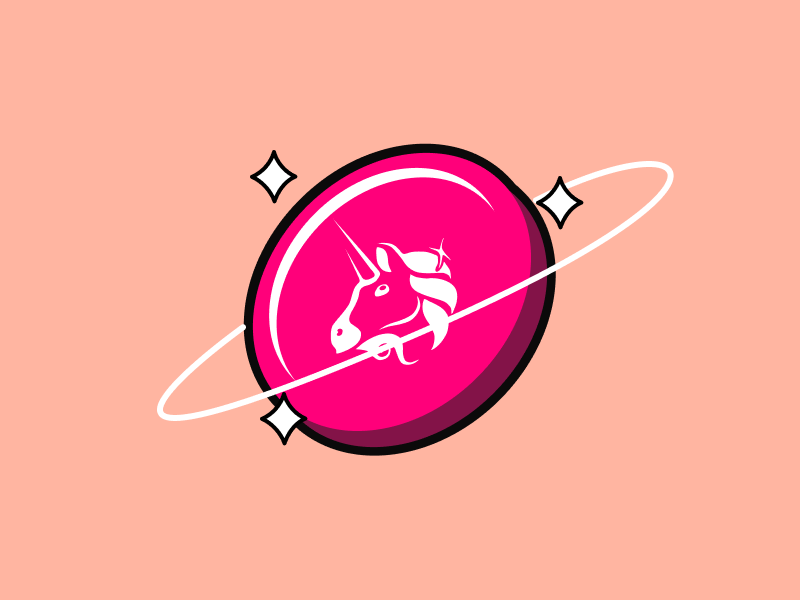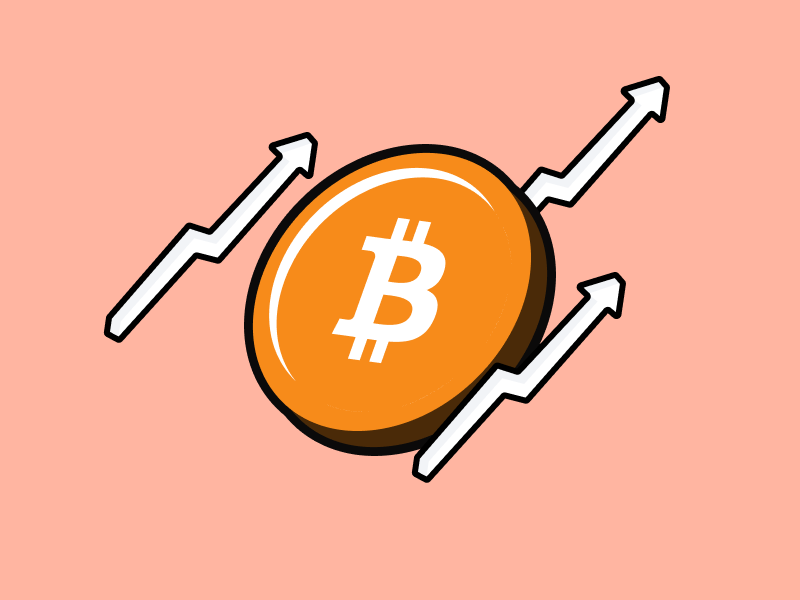The Future of NFTs: Market Shifts and Forward-Thinking Innovations
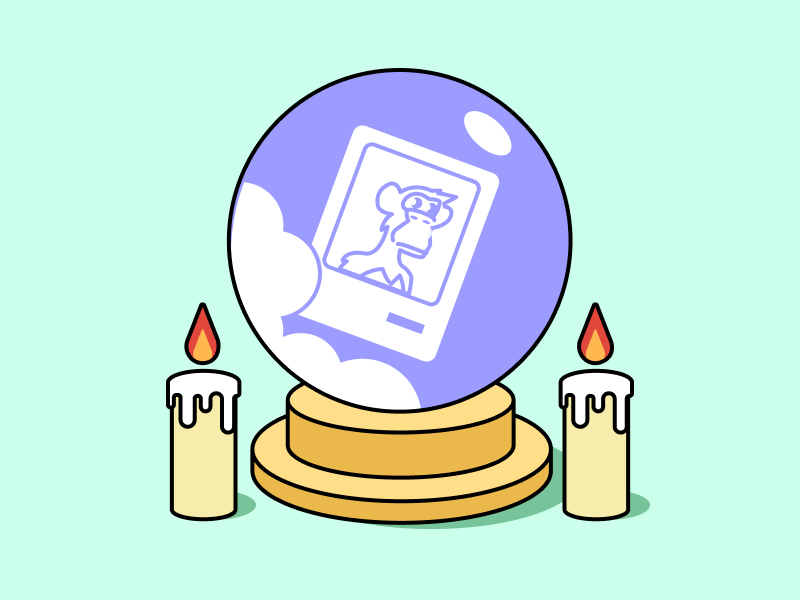
Is the NFT trend over? This question has always been raised along with the significant drop in the price and market capitalization of NFTs. A recent analysis by dappGambl revealed that as much as 95% of NFT collections, owned by around 23 million individuals, may be considered worthless. However, the NFT community is optimistic as NFT technology continues to evolve with the emergence of innovative projects that can potentially increase the broader adoption of NFTs. So, what are some of the innovative projects that are keeping the NFT community excited? And what is the future of NFTs? This article will delve into them extensively.
Article Summary
- 🤑 NFTs experienced popularity in 2021 and 2022, with high prices and widespread adoption by public figures. The NFT market reached 41 billion US dollars in 2021.
- 😨 Currently, the NFT market faces a significant drop, and many NFT collections are losing value. For example, Justin Bieber’s NFT Bored Ape #3001, purchased for 1,3 million US dollars in January 2022, as of October 5, 2023, is only worth about 42,254 US dollars.
- 🌟 Despite the bear market, NFT technology is advancing. Scalability solutions like L2 and L3 and proposals such as EIP-7212, EIP-1153, and the 4th Energy project all have the potential to reshape the NFT ecosystem and improve its functionality.
The Golden Age of NFTs
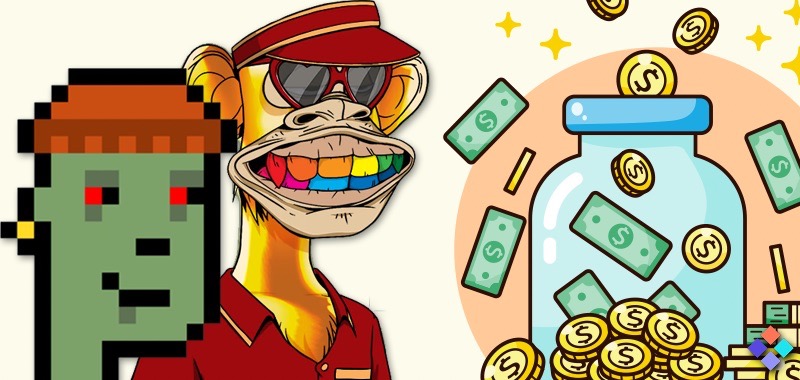
NFTs (Non-Fungible Tokens) experienced a massive surge in popularity in 2021 and 2022. High prices and wide adoption among public figures characterize this. The NFT market even grew to reach 41 billion US dollars in 2021. The play-to-earn game model involving NFTs was trending with 776 million US dollars in revenue in the 3rd quarter of 2021.
NFTs became more widely known when Mike Winkelmann, also known as Beeple, successfully sold the NFT “Everyday: The First 5000 Days” for 69.3 million US dollars through Christie’s auction house. Also, digital artist Pak managed to sell an NFT called “The Merge” for 91.8 million US dollars on Nifty Gateway in the same year.
2021 gave rise to several NFT projects that offered several uses for their NFT holders, such as the Bored Ape Yacht Club (BAYC). BAYC is an NFT project that features a ‘bored ape’ in its NFT artworks. This NFT is a PFP NFT that serves as a profile picture for social media accounts. Its fantastic price and high popularity give prestige value to its owners.
As mentioned earlier, NFTs are also popular in the gaming industry. The play-to-earn game model is a favorite among gamers because they not only play games but also earn crypto assets. Some well-known blockchain game names utilize NFT elements, such as Axie Infinity, Splinterland, Ember Sword, and others.
Current State of the NFT Market
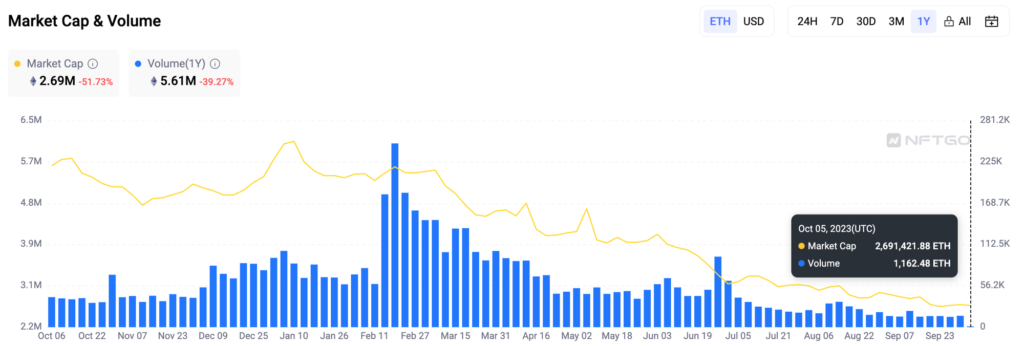
Initially, NFTs were a small part of the crypto market. Over time, the relationship between NFTs and crypto assets became more complex, and the NFT community argued that NFTs are independent market entities.
However, they are both interconnected, although the price movements of NFTs respond to crypto market movements with a delay. It is known as the ‘lag effect,’ which indicates that the price movements of NFTs and crypto assets do not move together.
The crypto market is entering a bear market phase after experiencing the ‘bubble effect’ when crypto prices soared and swelled until they finally burst and declined. In this phase, the crypto prices tend to move sideways and even lower. The same thing is also experienced in the NFT market.
dappGambl, a community specializing in finance and blockchain, has analyzed the NFT market. It found that most NFTs now are worthless. The results of its research show that from 73,257 NFT collections, 69,795 have a market capitalization of 0 ETH. It means that 95% of people who own NFT collections currently hold investments that are only worth a little.
Several celebrities, including Justin Bieber, Stephen Curry, and Madonna, have purchased NFTs from the Bored Ape Yacht Club (BAYC) collection at very high prices. However, the current value of these NFTs has decreased significantly. For example, Justin Bieber's NFT Bored Ape #3001, purchased for 1.3 million US dollars in January 2022, as of October 5, 2023, is only worth about 42,254 US dollars.
dappGambl also mentioned that NFT supply significantly exceeds NFT demand. Only 21% of the collections included in its research have been owned by their owners. It means that about four out of every five collectibles still need to be sold.
Technology Development in the NFT Sector
Despite being in a bear market, NFT technology continues to progress. It makes the future of the NFT ecosystem more full of possibilities than ever before. Some of the technological innovations that the NFT community is excited about are as follows:
1) L3s and Non-EVM Rollups
Layer 2 (L2) and layer 3 (L3) scalability solutions are different approaches to improving the Ethereum blockchain’s transaction efficiency.
L2 works by executing transactions outside the Ethereum main network but storing transaction data on Ethereum. It helps reduce pressure on the Ethereum network and speeds up the transaction process. The L2 solution is suitable for general transaction use.
On the other hand, L3 is a more specialized solution and has its execution environment. However, L3 transactions are settled on L2 and not on Ethereum. It provides greater flexibility for use cases, such as in the gaming industry, as demonstrated by Xai L3.
An advantage of the L3 solution is the ability to be fully customized according to the needs of a particular application. This customization is very important as it provides more choice and flexibility to NFT creators.
Immutable X and Zora are examples of L2s specifically designed to facilitate NFTs. They are highly scalable for minting and trading NFTs while having the security of the Ethereum blockchain.
Also read: What is Immutable X (IMX)?
In addition, L2 and L3 can work without relying on the Ethereum Virtual Machine (EVM). It allows developers to write code in Rust, C, and C++. It opens up opportunities for those already skilled in those languages to contribute to the L2 or L3 environment.
Innovations in scaling solutions like Arbitrum Stylus that support common programming languages continue to boost developments in the NFT space and the blockchain ecosystem as a whole. It has the potential to bring even more significant progress.
2) 4th. Energy: Boosting Applications from NFTs
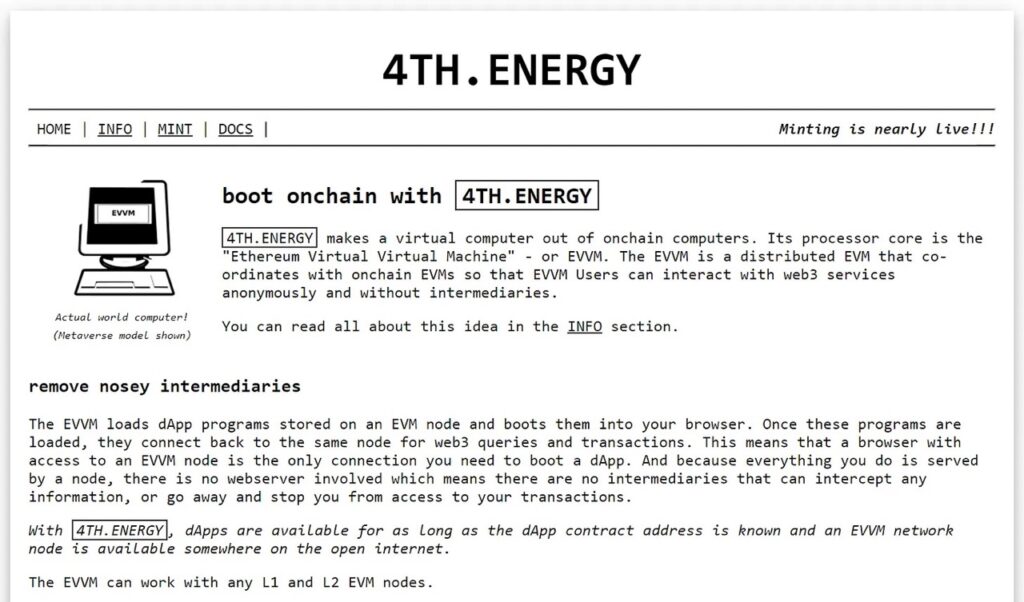
4th.Energy is a project developing an Ethereum Virtual Virtual Machine (EVVM) or a computer inside a computer (EVM). 4th.Energy is a decentralized computing environment that runs directly from the Ethereum blockchain. This technology has great potential to eliminate dependency on Web2 domains and intermediaries in the crypto world.
EVVM allows users to run applications such as Uniswap anonymously directly on the blockchain, increasing the resilience and security of Web3 applications. These applications will run from NFTs that can be loaded from the Ethereum blockchain and communicate with various EVM-compatible blockchains.
Although the project is still in the development stage, 4th.Energy could provide great potential for the development of NFTs.
3) EIP-7212: Facilitating Blockchain Transactions from Smartphones
EIP-7212 is a proposal that aims to integrate a new authentication standard called ‘passkey’ directly into the Ethereum Virtual Machine (EVM). The concept seeks to replace traditional passwords with more secure passkeys for logging into applications or websites.
Passkey is already used by major tech companies like Apple and Google, and EIP-7212 seeks to make it compatible with the EVM. It will allow users to sign transactions on the Ethereum blockchain directly from the user’s smartphone without the need for additional software.
Thus, every smartphone can become the key to interacting with NFTs and blockchain and thereby help accelerate the adoption of Web3 games and dApps. This proposal has great potential to transform user experience and security in the NFT ecosystem.
4) EIP-1153: Lower-cost On-chain NFTs storage
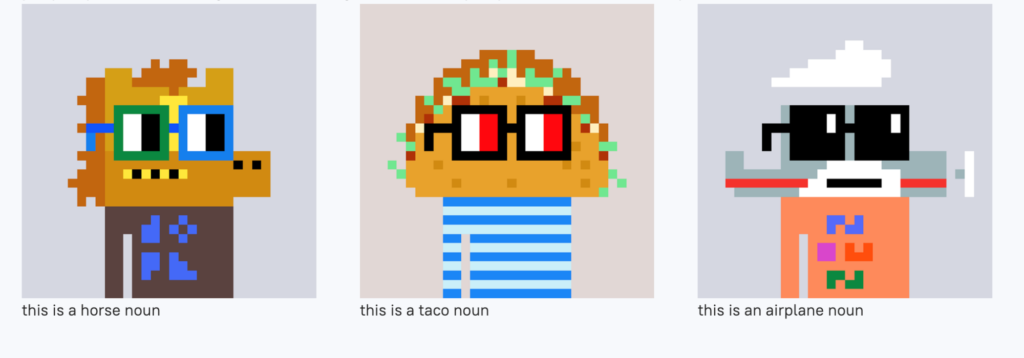
EIP-1153 is a proposal to address the high gas fees associated with on-chain metadata storage for NFTs on the Ethereum blockchain. Typically, on-chain metadata storage uses expensive SSTORE and SLOAD operation codes.
To address this issue, EIP-1153 proposes using new EVM operation codes, TSTORE and TLOAD, designed to reduce on-chain storage fees.
Implementing these operation codes will allow NFT creators to create more dynamic, interactive, and permanent NFTs entirely on-chain. It will open up more significant opportunities for artists and creators to experiment and create more innovative NFTs. Some existing NFT projects, such as Blitmaps, Nouns, and Terraforms, are early adopters of this potential use of EIP-1153.
5) ERC-6551 – Token-bound Accounts
Token Bound Accounts (TBAs) are smart contract wallets that are linked to specific NFTs. TBAs allow users to store various assets in the NFTs they own.
Before the existence of TBAs, NFT assets that users collected, such as in a game, would be stored as separate tokens in their wallet. But with TBA, users can have an inventory that allows those game assets to be transferred directly into their wallet.
Therefore, when you sell or transfer an NFT, all its assets will also be automatically transferred. TBA is applied to Sapienz NFTs, a project from Stapleverse’s dynamic NFT PFP.
Read more about Token-bound Account in this article.
Conclusion
NFTs experienced a golden age with popularity and price spikes in 2021 and 2022. However, the NFT market is currently facing a significant downturn, with many NFT collections losing value and supply exceeding demand.
Technological advancements, collaboration with traditional industries, and education can play an important role in increasing the usability and adoption of NFTs. Statista projects the growth of the NFT market in 2017 to reach 19.31 million users, while the current number of NFT users stands at 13.95 million.
While NFTs were initially recognized in art, they are now used in various contexts, such as blockchain games (GameFi), music tickets, financial instruments, etc. With these developments, NFTs have the potential to become more relevant and integrated in various aspects of life.
Buying Crypto Assets on the Pintu App
You can invest in crypto assets such as BTC, ETH, SOL, and others without worrying about fraud on Pintu. In addition, all crypto assets on Pintu have passed a rigorous assessment process and prioritize the principle of prudence.
The Pintu application is compatible with various popular digital wallets, such as Metamask, to facilitate transactions. Download the Pintu app on the Play Store and App Store! Your safety is guaranteed because Pintu is regulated and supervised by Bappebti and Kominfo.
In addition to making transactions on the Pintu app, you can also learn more about crypto through various Pintu Academy articles that are updated weekly! All Pintu Academy articles are created for educational and knowledge purposes, not as financial advice.
References
- William M. Peaster, The Future of NFTs 🔮, Bankless, accessed 5 Oktober 2023.
- Nuno Teodoro, How the NFT market peaks and bottoms differently from the rest of the industry, Forkast, accessed 5 Oktober 2023.
- Metav.rs Team, NFT market– statistics 2021-2023, Metav.rs, accessed 5 Oktober 2023.
- Stephen Katte, Are NFT markets in a death spiral or ready for a resurgence? Cointelegraph, accessed 5 Oktober 2023.
- Miles Klee, Your NFTs Are Actually — Finally — Totally Worthless, Rolling Stone, accessed 5 Oktober 2023.
Share
